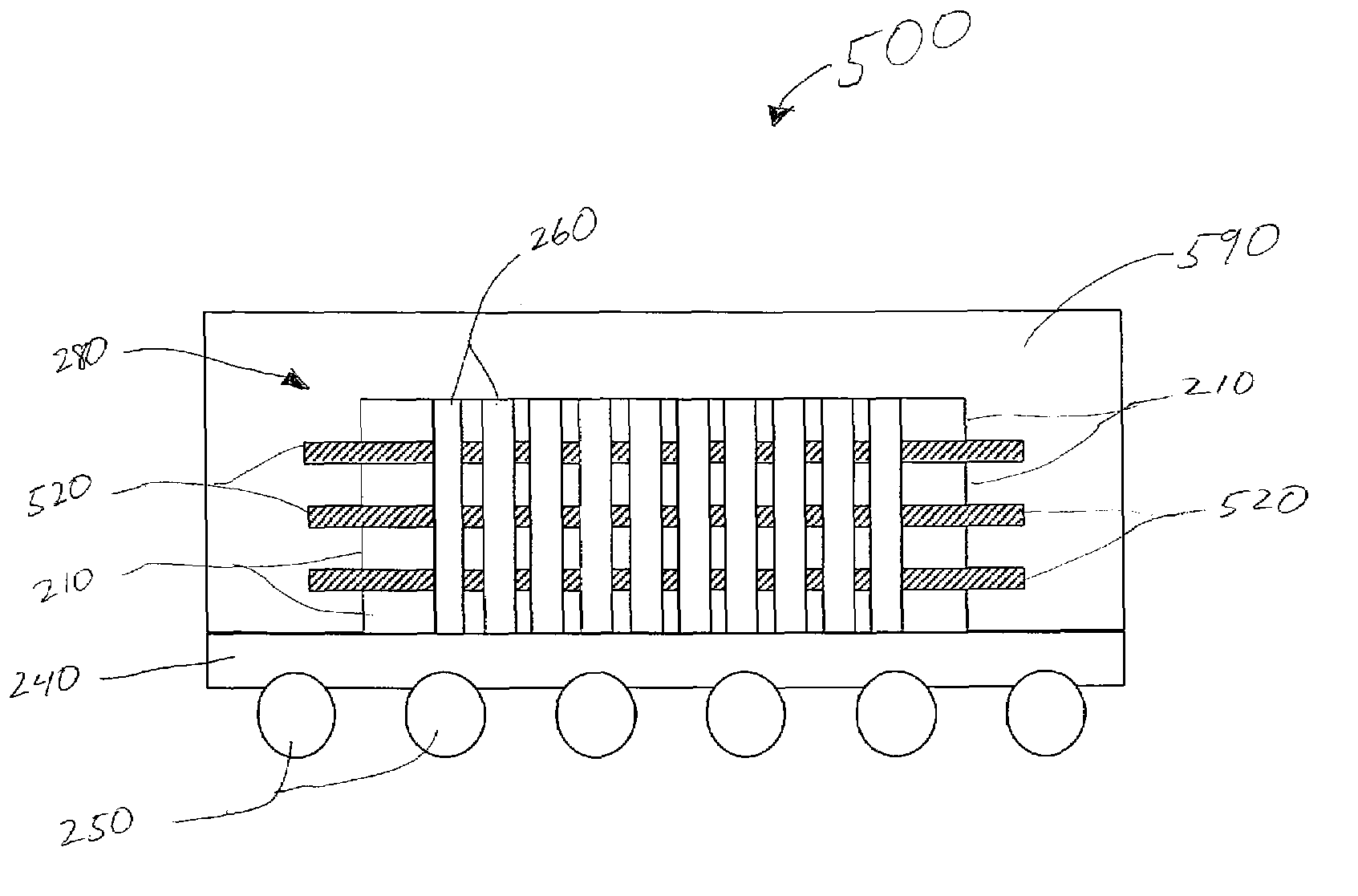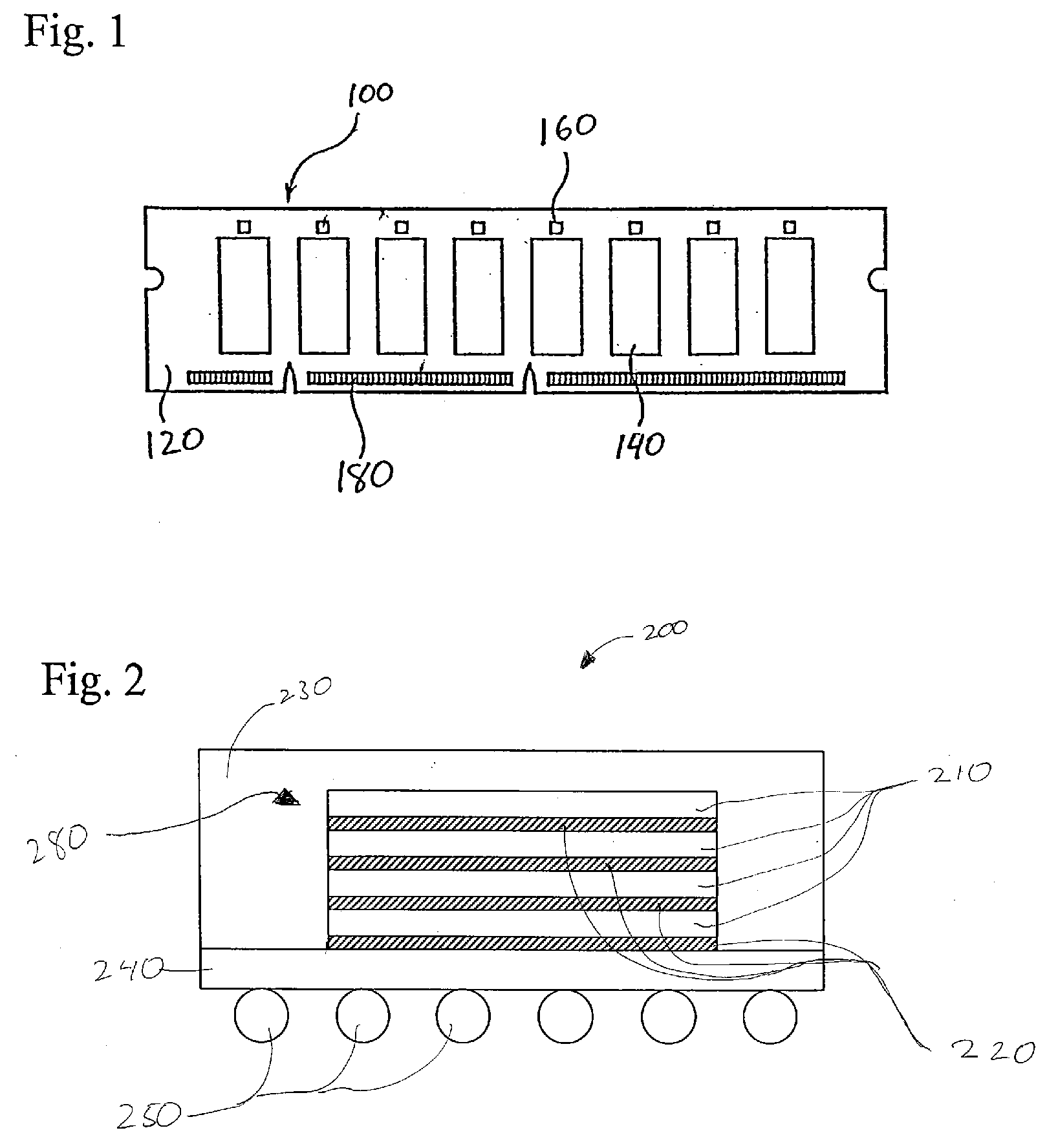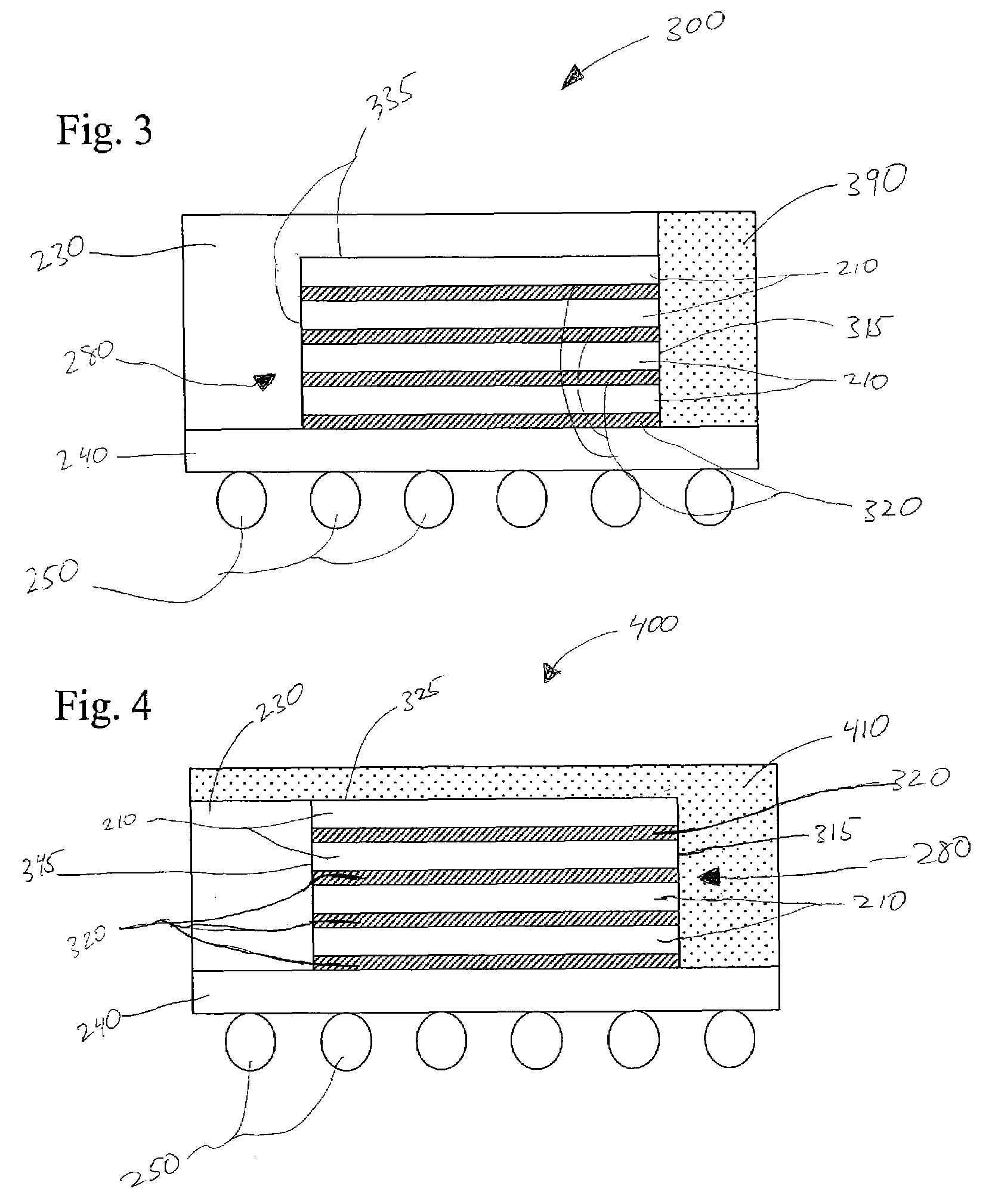Integrated circuit package with a heat dissipation device and a method of making the same
a technology of integrated circuits and heat dissipation devices, which is applied in the direction of semiconductor devices, semiconductor device details, electrical apparatus, etc., can solve the problems of limiting the design of microelectronic devices, limiting the performance level, and new-age devices such as high-power amplifiers and multi-chip modules, which radiate particularly large amounts of heat. , to achieve the effect of dissipating generated heat spikes and improving the electrical reliability of integrated circuits
- Summary
- Abstract
- Description
- Claims
- Application Information
AI Technical Summary
Benefits of technology
Problems solved by technology
Method used
Image
Examples
Embodiment Construction
[0036]These aspects of the present invention may provide particular advantages for improved heat transfer through packages for an integrated circuit assembly. Turning now to FIG. 1, a diagrammatic plan view of a multi-chip module, in this case a conventional memory module 100 is shown. The memory module shown is just one example of where packages of integrated circuit assemblies may be employed. The memory module 100 comprise packages for an integrated circuit assembly 140. The packages 140 may comprise integrated circuit devices such as memory devices, that may be DRAM or Dynamic Random Access Memory. A memory module 100 conventionally has a plurality of packages for integrated circuit assemblies 140. Next to the packages 140 may be other devices 160 such as termination resistors, capacitors, and the like. These devices 160 are also placed on the printed circuit board 120.
[0037]The printed circuit board 120 has an array of contact pads 180 provided along a side edge of each face of...
PUM
 Login to View More
Login to View More Abstract
Description
Claims
Application Information
 Login to View More
Login to View More - R&D
- Intellectual Property
- Life Sciences
- Materials
- Tech Scout
- Unparalleled Data Quality
- Higher Quality Content
- 60% Fewer Hallucinations
Browse by: Latest US Patents, China's latest patents, Technical Efficacy Thesaurus, Application Domain, Technology Topic, Popular Technical Reports.
© 2025 PatSnap. All rights reserved.Legal|Privacy policy|Modern Slavery Act Transparency Statement|Sitemap|About US| Contact US: help@patsnap.com



